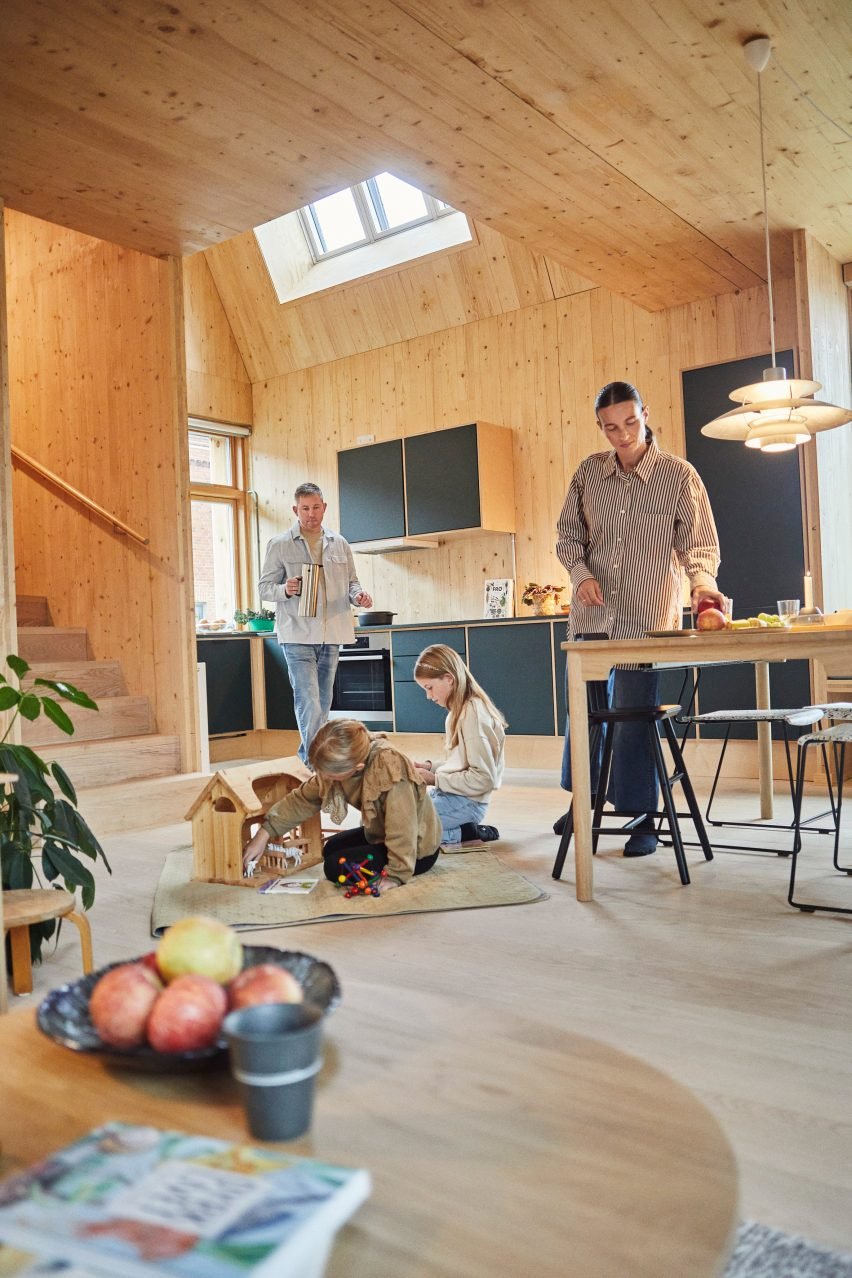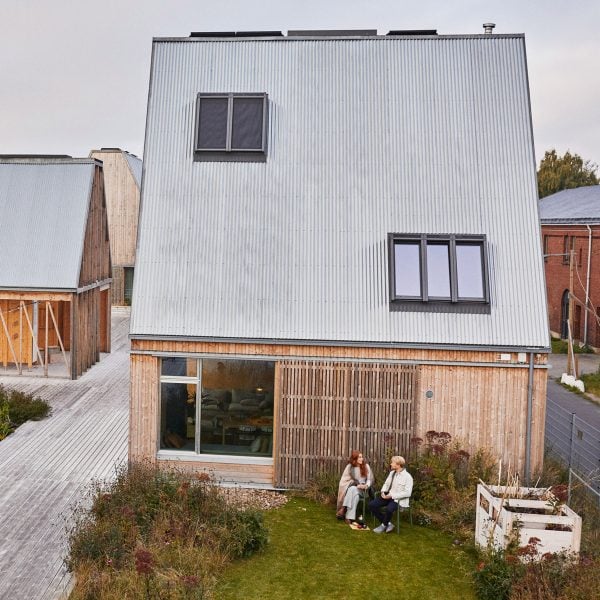Promotion: window manufacturer Velux is sharing the results from its ambitious housing experiment called Living Places which sought to address critical environmental and health challenges.
In July and August this year, Velux invited nearly 100 architects, entrepreneurs, designers and journalists from 12 countries to live at its Living Places Copenhagen project.

It was conceived as part of its broader initiative to better understand how building design impacts residents’ comfort and satisfaction while assessing indoor environmental quality and its effects on human well-being.
It was created in collaboration with Danish architecture studio EFFEKT, consulting engineering firm Artelia and contractor Enemærke & Petersen.

The brand said it set out to pursue a progressive vision of constructing buildings which serve the interests of people and the planet, addressing two fundamental issues: the climate emergency and human wellbeing.
Buildings and construction are estimated to make up 37 per cent of total global emissions, according to the United Nations.
First imagined in 2021, the housing experiment was built against five critical principles: health, sharing, simplicity, adaptability and scalability.

Velux said it was able to draw five overarching conclusions from the experiment. Firstly, the potential to use building materials which have as minimal impact on the planet as possible.
“Living Places Learnings shows that it is possible to build more sustainable and healthy buildings using standard materials, methods and technologies that are available today,” said the manufacturer.
The second conclusion drawn was the effectiveness of a “holistic approach” to homes, centred on the entire lifecycle of a building from its initial design to completion.

Velux argued that taking a holistic approach in focusing on comfort, energy and environmental parameters results in “healthy buildings that are good for people and the planet”.
Thirdly, the manufacturer concluded that creating an optimum indoor experience improves occupants’ mental and physical health, which is particularly imperative across European households where one in three residents experiences a negative reaction to lack of daylight, temperature, damp or noise, according to Velux.

“Over 70 per cent of Living Places guests reported improved mood, increased relaxation, and a sense of connection to nature while experiencing minimal negative effects,” added the manufacturer.
The fourth conclusion from the most recent experiment is that guests valued daylight and natural ventilation in their Living Places homes, which are designed to optimise both.
According to Velux, 83 per cent of guests chose to spend time in rooms illuminated by natural light and 90 per cent of guests were satisfied with the ease with which they adjusted fitted interior shadings.

“During their stay, 85 per cent of the guests perceived the houses to fit their functional needs,” reported the manufacturer.
As part of creating well-being at home, functional factors like design, layout, temperature, lighting and indoor climate can invoke immediate feelings of physical comfort in a building.
Velux’s fifth and final conclusion is that Living Places Copenhagen has achieved an indoor thermal environment within the European Standard’s comfortable range.
Velux’s focus on how the buildings remain cool in summer months and warm during colder times of the year reflected growing concerns that architects should reflect “operating emissions” as well as measuring emissions during construction.

“During the experiment period, the indoor temperature was within the best level of the European Standard 89 per cent of the time in one house and 90 per cent of the time in the other and within the comfortable range of the European Standard 98 per cent of the time in both houses,” concluded the manufacturer.
For more information, visit the Velux website.
Partnership content
This article was written by Dezeen for Velux as part of a partnership. Find out more about Dezeen partnership content here.

